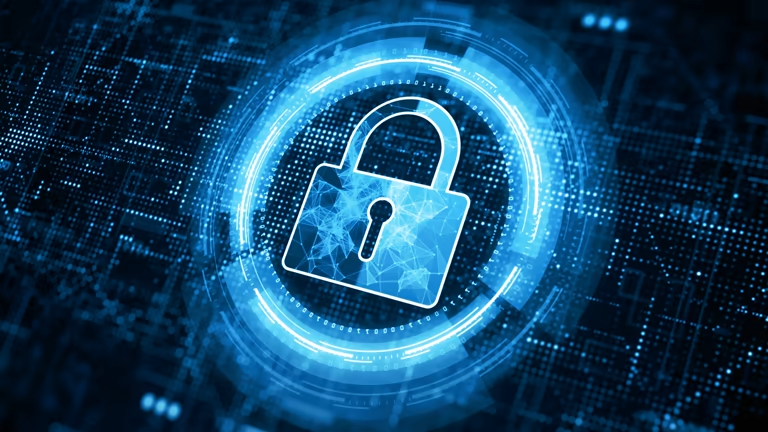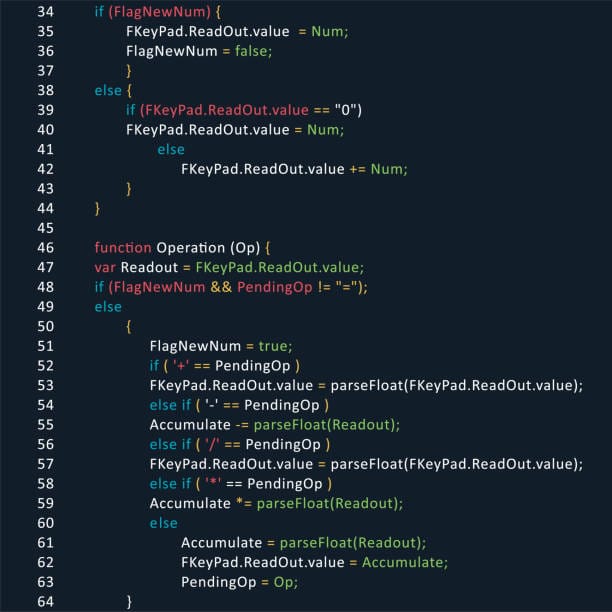It’s midnight, and somewhere in the glow of a monitor, a line of malicious code begins its journey. It doesn’t need a passport, it doesn’t knock politely, and it doesn’t care whether it lands in a Fortune 500 company’s server or on the dusty old laptop sitting on a kitchen counter. For years, our collective understanding of cybersecurity has been shaped not only by technology but by myths — stories we tell ourselves to feel safe or to explain the incomprehensible. These myths can be comforting, but they can also be dangerous.
The human brain has a peculiar way of underestimating invisible threats. We lock our doors at night because we can see the bolt slide into place, but our Wi-Fi routers blink quietly in the corner, often left entirely unguarded. Cybersecurity myths thrive in this unseen space, where assumptions can be fatal to privacy, finances, and even national security.
The Myth of “I’m Too Small to Be a Target”
One of the most persistent and perilous beliefs is that cybercriminals only go after big, wealthy, headline-making targets. It’s the “I’m too small to be noticed” illusion — a dangerous misunderstanding of how the digital underworld operates.
Hackers aren’t always lurking in dark rooms plotting against specific companies. Many deploy automated scanning tools that sweep the entire internet for vulnerabilities, indifferent to who owns the device. For them, your home network is just another dot on a vast map. If a vulnerability is found, the attack begins — whether you’re a billion-dollar corporation or a freelancer working from a coffee shop.
Cybercrime has democratized in the worst possible way. Phishing kits, ransomware-as-a-service, and pre-packaged malware are sold cheaply on underground markets, enabling criminals with minimal skill to launch broad, indiscriminate attacks. They don’t need to know your name; they only need a weak password, an outdated operating system, or a carelessly clicked email link.
The False Security of Antivirus Alone
There was a time when installing antivirus software felt like donning armor. It was the universal answer to every cyberthreat, a single silver bullet. But the landscape has shifted, and clinging to this myth can leave even the most cautious user dangerously exposed.
Modern cyberattacks often bypass traditional antivirus detection entirely. Malware can be disguised as legitimate software, hidden in encrypted traffic, or activated only after lying dormant for weeks. Cybercriminals have learned to adapt, crafting threats that antivirus programs either can’t recognize or can’t respond to quickly enough.
This doesn’t mean antivirus software is useless — it remains a vital layer of defense — but it’s only one layer. Real protection comes from a multi-layered approach: firewalls, intrusion detection systems, encrypted communications, secure authentication methods, and the most overlooked element of all — informed human behavior.
The Comfort of “Strong Passwords” Without Context
We’ve all been told to make strong passwords — complex, long strings of characters that no human could guess. But the myth here lies in the assumption that a strong password, on its own, guarantees safety.
No matter how intricate your password is, if it’s reused across multiple accounts, it becomes a ticking time bomb. A breach in one platform can lead to a cascade of compromises elsewhere. Worse, sophisticated phishing campaigns can trick even cautious users into handing over credentials voluntarily.
True password strength is about more than complexity — it’s about uniqueness, secure storage, and pairing with multi-factor authentication (MFA). The modern threat landscape demands that passwords be part of a larger security strategy, not the entire strategy.
The Myth of “Macs Don’t Get Viruses”
For years, Apple devices basked in the myth of invulnerability. Marketing campaigns subtly fed the idea that Macs, unlike their Windows counterparts, were immune to malware. This belief had a grain of truth — in the early days, the smaller user base made Macs a less attractive target. But that reality has shifted dramatically.
Cybercriminals go where the money is, and as Apple’s market share grew, so did the incentive to attack. Today, macOS faces a growing array of threats: ransomware, spyware, adware, and sophisticated phishing scams designed specifically for Apple users. The myth persists, but the statistics tell another story.
Complacency is the real danger here. Believing your device is untouchable leads to risky behavior: skipping updates, ignoring security alerts, and foregoing protective software. In cybersecurity, arrogance is an open door.
The Misbelief That Public Wi-Fi is “Fine for a Quick Check”
Picture this: you’re at a bustling airport, sipping coffee, and decide to check your bank account “just for a moment.” The free Wi-Fi beckons, and you connect without a second thought. For many, this seems harmless — it’s just a quick peek, right?
The truth is that public Wi-Fi networks can be a playground for attackers. Unencrypted connections make it possible for malicious actors to intercept data, inject malware, or impersonate legitimate websites. A skilled hacker can turn a busy café into a hunting ground, capturing passwords, emails, and credit card numbers in real time.
Even networks with passwords aren’t inherently safe — if everyone has the same access code, the network’s defenses are minimal. The solution isn’t paranoia but caution: using a virtual private network (VPN), avoiding sensitive transactions in public spaces, and treating every public connection as potentially compromised.
The Dangerous Belief in “Security Through Obscurity”
Some people take comfort in believing they’re safe simply because they aren’t famous, their website isn’t well-known, or their business is small. This is a cousin of the “too small to target” myth, but with a twist — it’s the idea that being obscure is itself a protective shield.
In reality, automated cyberattacks don’t care about obscurity. They hunt for weaknesses, not fame. A poorly secured blog, a neglected e-commerce site, or an unused cloud account can all be exploited, sometimes as part of a larger attack chain.
Cybercriminals often use compromised small sites to host malicious code, distribute spam, or act as stepping stones to bigger targets. In the eyes of an attacker, your obscurity is irrelevant; your vulnerability is everything.
The Comforting but False Belief That Software Updates Can Wait
We’ve all been there — a pop-up announces a new software update, but you’re busy, so you click “remind me later.” Days turn into weeks, and the update remains ignored. It feels harmless, even practical. But this procrastination is one of the most common ways people invite cyberattacks.
Updates aren’t just about new features; they often patch critical security vulnerabilities. When an update is released, attackers study the patch notes, reverse-engineer the fix, and exploit the flaw in systems that haven’t yet been updated. This window between patch release and user installation is prime hunting time.
Delaying updates is like leaving your front door unlocked after the news has announced that burglars are targeting your neighborhood. The lock exists; you just haven’t turned it.
The Illusion That Cybersecurity is “Purely a Technical Issue”
This myth is subtle and deeply ingrained. It’s the belief that cybersecurity belongs exclusively to the IT department or tech experts — that it’s about firewalls, encryption, and servers humming in climate-controlled rooms.
In truth, the weakest link in most security systems is not technology but people. Social engineering, phishing, and manipulation of trust account for a staggering percentage of successful breaches. Attackers often bypass technical defenses entirely by tricking a human into opening the door.
Cybersecurity is a cultural issue as much as a technical one. Organizations must foster awareness, train staff, and build habits of skepticism. At the personal level, individuals need to see themselves as active participants in their own digital safety, not passive recipients of protection.
The Belief That Cybersecurity is “One and Done”
Some approach cybersecurity as a checkbox exercise — install a program, change a password, and move on. This mindset is a dangerous myth because the threat landscape never stands still. Attackers evolve, tools become outdated, and yesterday’s best practice can become tomorrow’s liability.
Cybersecurity is a continuous process. It requires ongoing vigilance, regular audits, adaptive strategies, and the humility to acknowledge that no system is ever perfectly secure. The moment we declare the job “finished” is the moment we become vulnerable.
The Final Truth Behind the Myths
Busting these myths isn’t about sowing fear; it’s about replacing dangerous illusions with actionable truth. Cybersecurity isn’t a static fortress but a living ecosystem, one that demands constant attention, adaptation, and cooperation.
We live in an era where a teenager with a laptop can disrupt a multinational company, where ransomware can cripple hospitals, and where misinformation can erode democratic processes. Against such a backdrop, the myths we tell ourselves are more than harmless misunderstandings — they can be the very gaps that attackers exploit.
The real path to safety lies not in denial or blind trust but in informed action. It means seeing cybersecurity as a shared responsibility, where every click, every update, every connection matters. The myths are seductive because they make the world seem simpler. The truth is messier, but in that complexity lies our best defense.






